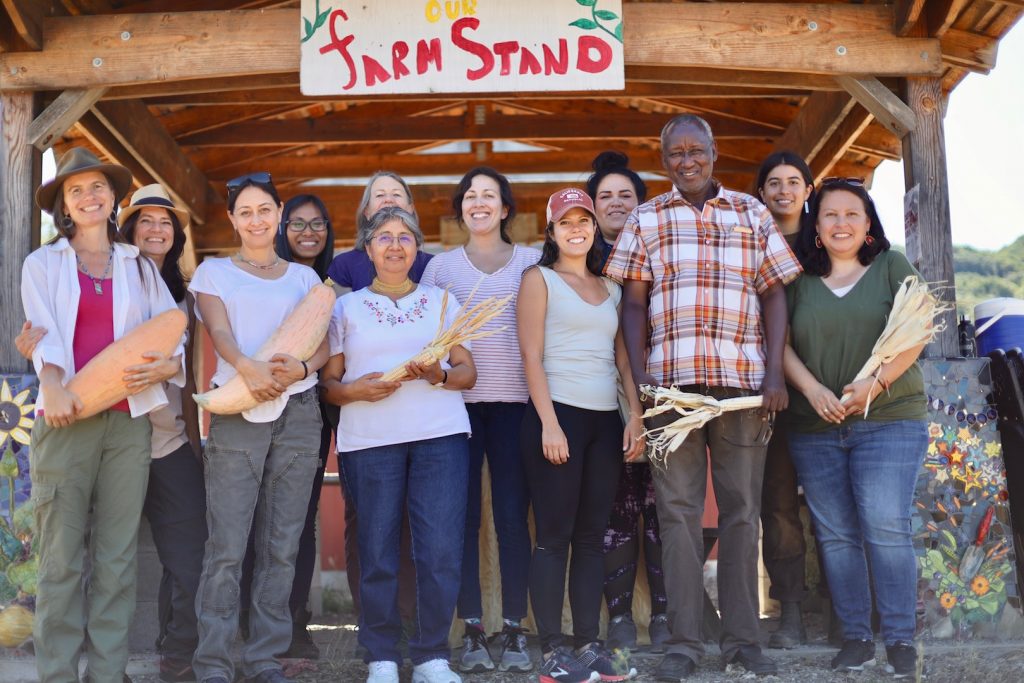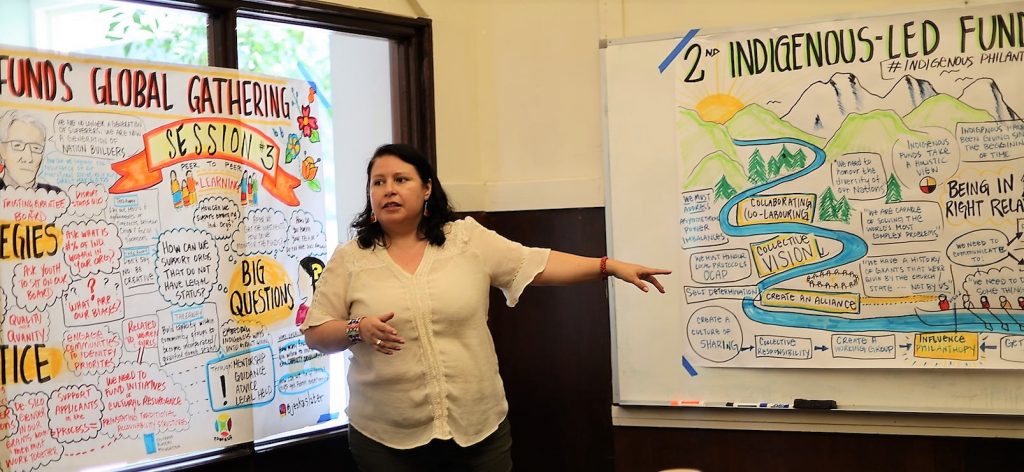
Throughout my career in sustainable development and now philanthropy, I’ve always wrestled with the concept of “capacity building.” It’s common to see the term described and practiced as a means to bring change – be it long-term, short-term or at a systemic level. Capacity building is often associated with providing education and other tools to impoverished populations and those impacted by harmful development projects, corrupt government policies, biased legal systems and centuries of racism. It often includes Global North building capacity of Global South and funders’ support of their grantees. What’s not commonly recognized about capacity building, however, is that funding organizations need it as much as impacted communities, if not more.
True Costs Initiative (TCI) takes this critical viewpoint seriously. At the beginning of this year, as we were looking for ways to grow and deepen our knowledge, we decided we needed capacity building to better understand issues impacting native communities around the world – shared and unique. That led us to International Funders for Indigenous Peoples (IFIP), which we knew as a leader in the field with a strong reputation. We reached out and quickly determined that IFIP, with its mission, core principles and rich networks, would be a good platform for us to participate in meaningful engagement and to help close our capacity gap.
Our decision to learn and work more on this issue was based on the acknowledgement that philanthropy exists as a result of historic and current extractive and exploitive practices – intentional and unintentional. Given our work on business and human rights and corporate accountability issues, we understand that indigenous communities around the world are among the most exploited and impacted. It is also clear to us that indigenous peoples are among the most fearless and successful human-rights and earth-rights defenders.
Based on a U.N. estimate, there are approximately 370 million indigenous people globally across more than 70 countries representing about 5 percent of the world’s population [1]. An estimate of 20 percent of the world’s surface inhabited by indigenous peoples is critically significant to global biodiversity [2]. According to Mark Dowie, the author of “The Haida Gwaii Lesson,” an estimate of 80 percent of the world’s remaining biological diversity is stewarded by indigenous peoples. Indigenous peoples also account for 90 percent of its cultural diversity. Fortunately, there has been more and more recognition of the important role native communities can play in solving the world’s most pressing problems.
However, understanding the power of indigenous peoples in saving Mother Earth is not enough. If we truly believe in indigenous-led solutions, we need to expand our knowledge and we need to act. With access to resources and the funder community, it is essential for us to support native communities around the world and demand that governments and corporations protect and respect human rights and ensure effective remedies when harms occur.

Representing TCI, I participated in the 2019 IFIP Learning Institute, where I engaged in an intensive six-month program learning directly from indigenous leaders Hussein Isack of Kenya, Yolanda Teran Maigua of Ecuador and Janene Yazzie of the United States. Through their teachings and rich discussions held among participants from diverse funding organizations, I recognized the importance of acknowledging history and the legacy of colonization in our understanding and support of native communities. I also came to better understand how biodiversity is not just about natural physical environment, but also includes the traditional knowledge of people who have lived and stewarded the land for years and generations. We must also correct our understanding of indigenous women leadership, which existed long before the Western definition of gender equality was first introduced.
Informed by these learnings, along with the leadership of TCI Director, my organization has taken the following steps:
- Developed an action plan to support native movements
- Engaged directly with indigenous-led organizations, including those led by indigenous women
- Identified how to close funding gaps through conversations with indigenous peoples and people of color, not just NGOs representing them
- Adjusted our grant recommendation process to ensure it is more accessible for those with different communication approaches and created enabling conditions allowing us to directly fund indigenous-led organizations
- Continue to proactively seek opportunities to learn, educate ourselves and build our capacity to better understand the issues faced by indigenous communities
I know the above steps aren’t enough. TCI and organizations like us need to go beyond recommending a small number of grants to indigenous-led organizations to truly institutionalize our commitment to indigenous-led solutions. To fully accomplish that goal, we must continue to build our capacity and be guided and educated by indigenous leaders from around the world. With the on-going guidance IFIP has continued to provide us beyond the program completion, along with our proactive engagement with indigenous-led networks, I am confident that TCI will become increasingly effective in partnering with native communities around the world to address the world’s pressing problems.
References
[2] The Haida Gwaii Lesson: A Strategic Playbook for Indigenous Sovereignty by Mark Dowie (2017) and GRANTMAKER’S GUIDE: Strengthening International Indigenous Philanthropy by IFIP (2014)